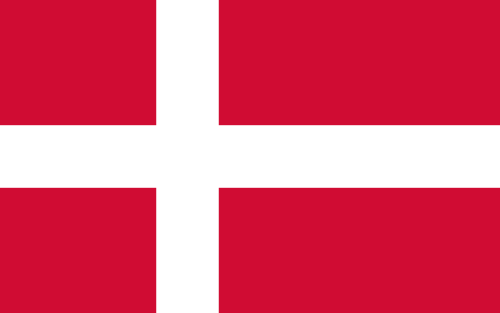Discover Denmark: A land of historic charm, modern design, and sustainability. Explore Danish culture, society, and the beauty of Scandinavia.
Public Holidays for Denmark in the year 2025
- New Year’s Day is on Wednesday, 1 January 2025
- Maundy Thursday is on Thursday, 17 April 2025
- Good Friday is on Friday, 18 April 2025
- Easter Sunday is on Sunday, 20 April 2025
- Easter Monday is on Monday, 21 April 2025
- Ascension Day is on Thursday, 29 May 2025
- Whit Sunday is on Sunday, 8 June 2025
- Whit Monday is on Monday, 9 June 2025
- Christmas Day is on Thursday, 25 December 2025
- 2nd Day of Christmas is on Friday, 26 December 2025
Public Holidays for Denmark in the year 2024
- New Year’s Day: Monday, 1 January 2024
- Maundy Thursday: Thursday, 28 March 2024
- Good Friday: Friday, 29 March 2024
- Easter Sunday: Sunday, 31 March 2024
- Easter Monday: Monday, 1 April 2024
- Ascension Day: Thursday, 9 May 2024
- Whit Sunday: Sunday, 19 May 2024
- Whit Monday: Monday, 20 May 2024
- Christmas Day: Wednesday, 25 December 2024
- 2nd Day of Christmas: Thursday, 26 December 2024

History
- Viking Roots: Originating as a land of Vikings, Denmark’s history is marked by maritime prowess and exploration.
- Monarchy and Empire: One of the oldest monarchies in the world, Denmark once included Norway and ruled over parts of Sweden and Britain.
- Modern Era: Transitioned peacefully to a modern, prosperous, and democratic nation in the 19th and 20th centuries.
Geography
- Location: Located in Northern Europe, Denmark consists of the Jutland Peninsula and numerous islands, with Greenland and the Faroe Islands as autonomous territories.
- Terrain: Characterized by flat lands, sandy coasts, and a temperate climate.
- Environmental Focus: Renowned for its commitment to sustainability and renewable energy.






Culture
- Rich Heritage: Danish culture is known for its literary and artistic contributions, with figures like Hans Christian Andersen and Søren Kierkegaard.
- Design and Architecture: Famous for its minimalist design and architecture, with an emphasis on functionality and simplicity.
- Cuisine: Traditional Danish cuisine includes smørrebrød (open sandwiches) and pastries, with a growing focus on new Nordic cuisine.
Economy
- Robust Economy: Boasts a high standard of living, with a strong economy based on services, manufacturing, and trade.
- Welfare State: Known for its extensive welfare system, offering high levels of social support, healthcare, and education.
- Green Economy: A global leader in green technology and sustainability initiatives.
Politics
- Government: A constitutional monarchy with a parliamentary system. The country is known for its political stability and transparency.
- EU Membership: A member of the European Union, but retains its own currency, the Danish krone.
Society
- Social Cohesion: Danish society is marked by egalitarianism, community spirit, and high levels of happiness and life satisfaction.
- Education and Healthcare: Offers free, high-quality education and healthcare services to its citizens.
- Language: Danish is the official language, with high proficiency in English among the population.
Science and Technology
- Innovation Leader: Strong in areas of pharmaceuticals, biotechnology, and information technology.
- Research and Development: Focuses on R&D in various fields, contributing significantly to scientific advancements.
Arts and Literature
- Cultural Contributions: Rich in arts and literature, with a tradition of storytelling, music, and cinema. Danish cinema, in particular, has gained international acclaim.
- Festivals and Events: Hosts various cultural festivals and events celebrating music, film, and art.
Sports
- Popular Sports: Football is the most popular sport, along with handball, golf, and sailing.
- International Success: Danish athletes have achieved success in various sports, including at the Olympic Games.
International Relations
- Global Engagement: Actively participates in international organizations and global discussions, particularly on issues of climate change and sustainability.
- Nordic Cooperation: Plays a key role in the Nordic Council, fostering close ties with neighboring Scandinavian countries.
Environmental Challenges
- Sustainability Efforts: Committed to environmental protection, with ambitious targets for renewable energy and carbon neutrality.
- Conservation Initiatives: Actively works on preserving its natural landscapes and biodiversity.
Tourism
- Attractions: Attracts visitors with its scenic landscapes, historic castles, and modern design. Copenhagen, the capital, is a major draw for its culture, nightlife, and culinary scene.
Here’s a list of the top 10 sights for backpackers in Denmark, each with a unique appeal:
1. Copenhagen (Nyhavn, The Little Mermaid, Tivoli Gardens)
- Why: Copenhagen is Denmark’s capital and cultural hub. Nyhavn’s colorful harbor is iconic, while Tivoli Gardens is one of the world’s oldest amusement parks. The Little Mermaid statue is a nod to Danish author Hans Christian Andersen. Copenhagen is budget-friendly with plenty of free or affordable attractions, making it ideal for backpackers.
2. Roskilde Cathedral and Viking Ship Museum
- Why: Roskilde, only a short trip from Copenhagen, offers UNESCO-listed Roskilde Cathedral, the burial site of Danish monarchs. The Viking Ship Museum showcases Denmark’s rich Viking history. Backpackers can explore the museum on a budget and enjoy the historical context.
3. Bornholm Island
- Why: Known for its rugged cliffs, sandy beaches, and cycling routes, Bornholm is an outdoor paradise. It’s less touristy, providing a peaceful escape. Backpackers love it for its affordability, stunning landscapes, and opportunities for biking and camping.
4. Møns Klint (Møn Island)
- Why: These dramatic white chalk cliffs are a natural wonder and one of Denmark’s most scenic spots. Hiking trails along the cliffs and forests provide stunning views, while the beach below offers fossil hunting. Backpackers enjoy the free access to nature and camping options nearby.
5. Aarhus (Den Gamle By and ARoS Museum)
- Why: Denmark’s second-largest city, Aarhus blends modernity with history. The Den Gamle By (Old Town Museum) offers a journey through Danish history, and the ARoS Art Museum is famous for its “Your Rainbow Panorama.” Aarhus is youthful, vibrant, and affordable with its large student population.
6. Ribe (Denmark’s Oldest Town)
- Why: Ribe is Denmark’s oldest town, filled with medieval charm. Backpackers come for the picturesque streets, Ribe Cathedral, and Viking Center, which recreates the Viking era. It’s a small town with a big history, easy to explore on foot or bike.
7. Skagen (Grenen and Råbjerg Mile)
- Why: Skagen, Denmark’s northernmost town, is known for Grenen, where two seas meet, and the shifting sand dunes of Råbjerg Mile. Its unique light and natural beauty have inspired artists for centuries. Backpackers enjoy the remoteness and free outdoor attractions.
8. Odense (Hans Christian Andersen’s Birthplace)
- Why: The birthplace of famed fairy tale writer Hans Christian Andersen, Odense is full of literary history. Backpackers explore Andersen’s museum, historic streets, and green parks. Odense is affordable, walkable, and less crowded than Copenhagen.
9. Fyn Island (Egeskov Castle)
- Why: Fyn, also known as Funen, is often called Denmark’s garden island due to its rolling hills and farmland. Egeskov Castle, a well-preserved Renaissance water castle, is a major draw. Backpackers enjoy the island’s scenic beauty, castles, and accessible cycling routes.
10. Kronborg Castle (Elsinore)
- Why: Known as Hamlet’s Castle, Kronborg in Helsingør is one of Denmark’s most famous castles. Backpackers interested in literature, history, and architecture visit for its Shakespearean connections and beautiful seaside location. It’s accessible by public transport from Copenhagen, making it easy for budget travelers.
Why These Sights Are on the List:
These locations offer a mix of history, culture, and nature, providing a rich Danish experience. Backpackers appreciate them for their budget-friendly options, such as free attractions, affordable accommodations, and ease of access by public transportation or bike. Denmark’s small size makes it easy to explore, and these sights highlight the country’s Viking heritage, natural beauty, and artistic influence.
In summary, Denmark is a country that seamlessly blends its historical legacy with modern living. It stands as a model of social welfare, environmental stewardship, and cultural richness, continuing to influence and inspire on a global scale.

